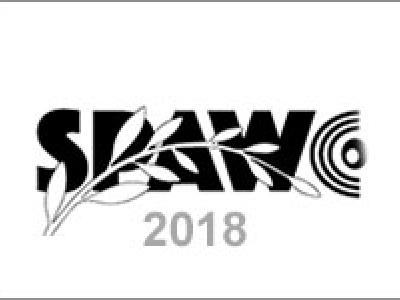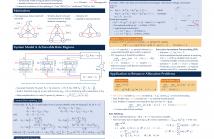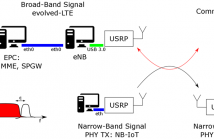
The 19th IEEE International Workshop on Signal Processing Advances in Wireless Communications, SPAWC 2018, will be held in Kalamata, Greece, June 25-28, 2018. The workshop is devoted to advances in signal processing for wireless communications, networking, and information theory. The technical program features plenary talks, tutorials, as well as invited and contributed papers presented in poster format.

- Read more about Interference Management via User Clustering in Two-Stage Precoder Design
- Log in to post comments
We consider a single cell downlink (DL) massive multiple-input multiple-output (MIMO) set-up with user clustering based on statistical information. The problem is to design a fully digital two-stage beamforming aiming to reduce the complexity involved in the conventional MIMO processing. The fully digital two-stage beamforming consists of a slow varying channel statistics based outer beamformer (OBF) and an inner beamformer (IBF) accounting for fast channel variations.
SPAWC2018.pdf
- Categories:
 19 Views
19 Views
- Read more about Bayesian Learning based Millimeter-Wave Sparse Channel Estimation with Hybrid Antenna Arrays
- Log in to post comments
We consider the problem of millimeter-wave (mmWave) channel estimation with a hybrid digital-analog two-stage beamforming structure. A radio frequency (RF) chain excites a dedicated set of antenna subarrays. To compensate for the severe path loss, known training signals are beamformed and swept to scan the angular space. Since the mmWave channels typically exhibit sparsity, the channel response can usually be expressed as a linear combination of a small number of scattering clusters.
- Categories:
 57 Views
57 Views
- Read more about Non-Linear Digital Self-Interference Cancellation for In-Band Full-Duplex Radios Using Neural Networks
- Log in to post comments
Full-duplex systems require very strong self-interference cancellation in order to operate correctly and a significant part of the self-interference signal is due to non-linear effects created by various transceiver impairments. As such, linear cancellation alone is usually not sufficient and sophisticated non-linear cancellation algorithms have been proposed in the literature. In this work, we investigate the use of a neural network as an alternative to the traditional non-linear cancellation method that is based on polynomial basis functions.
- Categories:
 43 Views
43 Views
- Read more about Optimal Resource Allocation for Non-Regenerative Multiway Relaying with Rate Splitting
- Log in to post comments
Optimal resource allocation in interference networks requires the solution of non-convex optimization problems. Except from treating interference as noise (IAN) one usually has to optimize jointly over the achievable rates and transmit powers. This non-convexity is normally only due to the transmit powers while the rates are linear. Conventional approaches like the Polyblock Algorithm treat all variables equally and, thus, require a two layer solver to exploit the linearity in the rates and keep the computational complexity at a reasonable level.
poster.pdf
- Categories:
 18 Views
18 Views
- Read more about Implementation and measurement of Power Adapted-OFDM using OpenAirInterface
- Log in to post comments
The Fifth Generation of mobile communications (5G) is being standardized in order to reach higher data rates and deploy new services. In this frame, researchers are looking for possible waveforms to improve the air interface. Orthogonal Frequency Division Multiplexing (OFDM) has high Out-of-Band Emissions (OBE) which force us to leave wider guard bands, reducing so the spectral efficiency. Recently, we have proposed the Power Adapted-OFDM which is capable of fulfilling the requirements of 5G and avoids the main issues of other proposed candidates.
- Categories:
 12 Views
12 Views
- Read more about Seismic Signal Compression Through Delay Compensated and Entropy Constrained Dictionary Learning
- Log in to post comments
In this paper, we propose a new sparse dictionary learning scheme for lossy compression of seismic signals collected at a single sensor from multiple source shots. The method leverages the entropy constraint and delay compensation for dictionary learning. Using the proposed method for delay compensation in seismic data squeezes more redundancy out of the data which results in a sparser representation for a given dictionary. The objective of entropy constraint term in dictionary learning is to make the sparse coefficients tailored to the compression objective.
- Categories:
 4 Views
4 Views
- Read more about Time Series Prediction via Recurrent Neural Networks with the Information Bottleneck Principle
- Log in to post comments
- Categories:
 83 Views
83 Views
- Read more about Topological Interference Alignment via Generalized Low-Rank Optimization with Sequential Convex Approximations
- Log in to post comments
- Categories:
 6 Views
6 Views
- Read more about Topological Interference Alignment via Generalized Low-Rank Optimization with Sequential Convex Approximations
- Log in to post comments
- Categories:
 4 Views
4 Views
- Read more about Adaptive Mode Switching Algorithm for Dual Mode SWIPT with Duty Cycle Operation
- Log in to post comments
In this paper, we design a self-powering dual mode simultaneous wireless information and power transfer (SWIPT) system in which a sensor node adaptively controls single tone or multi-tone communication mode. To this end, we introduce duty cycle operation for the dual mode SWIPT with self-powering, which considers nonlinear energy harvesting (EH) model for both single tone and multi-tone waveforms. We formulate an adaptive mode switching (MS) problem which maximizes the achievable rate under the energy causality condition.
- Categories:
 8 Views
8 Views